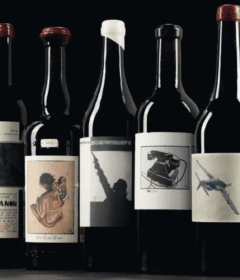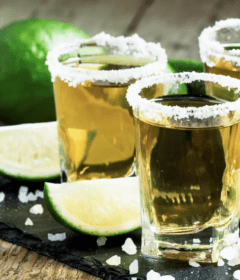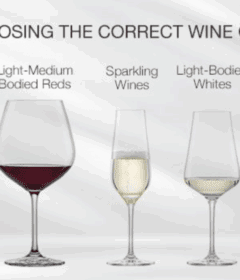Top Ranked French Bordeaux

Top Ranked French Bordeaux – One of Napoleon III’s greatest legacies was the creation of the Bordeaux Classification of 1855.
Napoleon wanted to demonstrate the superiority of France’s top-ranked Bordeaux wines at the Exposition Universelle de Paris, he established the formal ranking of Bordeaux’s Chateau wineries.
Top Ranked French Bordeaux – Only four chateaux were initially chosen.
Since the vineyards of Mouton Rothschild were owned by an Englishman at the time, it was conspicuously excluded from the official classification as a First Growth.
Top Ranked French Bordeaux – It was not until 1973 that Mouton Rothschild could rightfully join its other First Growth neighbors, Lafite Rothschild, Latour, Margaux, and Haut Brion.

Le Clarence de Haut-Brion – Chateau Bahans Haut-Brion 2016
93 Points
$200 a Bottle
Similar in style and elegance to its elder, the Château Haut Brion red, this harmonious and distinctive wine is an ode to the specific terroir of the Graves appellation, presenting a high-quality nose of tobacco and black fruit.
Le Clarence brings together all the unique attributes of a fine wine, while reaching maturity more quickly.
The color is dark red; the nose intense and enticing, with bursts of red fruit.
The wine starts out tight yet flavorful on the palate, then quickly reveals a dense and silky tannic structure.
Fresh fruit dominates the finish, leaving a pleasant, ethereal impression.
Château Haut-Brion is the oldest of Bordeaux’s five first growths, and one of the most famous wines in the world. Located in Pessac-Léognan, south of the city of Bordeaux, the château is rather far removed from its counterparts, all of which are found in the Médoc.
The vineyards were established in the 1530s by the Pontac family, changing hands several times throughout the ensuing centuries.
Historical evidence shows that Haut-Brion was drunk by King Charles II and Thomas Jefferson, and the famous London diarist Samuel Pepys was also a fan of the wine.
The estate was acquired by American Francophile Clarence Dillon in 1935 and has been managed by the family since.
Haut-Brion is notable as being the only first growth in the Graves region south of Bordeaux city – Lafite Rothschild, Mouton Rothschild and Latour are all in Pauillac, while Château Margaux is – unsurprisingly – in Margaux.
Haut-Brion’s red wine, also known as the “grand vin” is its key line, comprising most of the château’s output.
However, it is also unusual in the classified growths that it has a corresponding white wine that shares the simple Haut-Brion name (although this is far from unusual for estates in the Graves and Pessac-Léognan, which regularly produce both red and white wines) and is often dubbed “Haut-Brion blanc”, even by English-speakers.
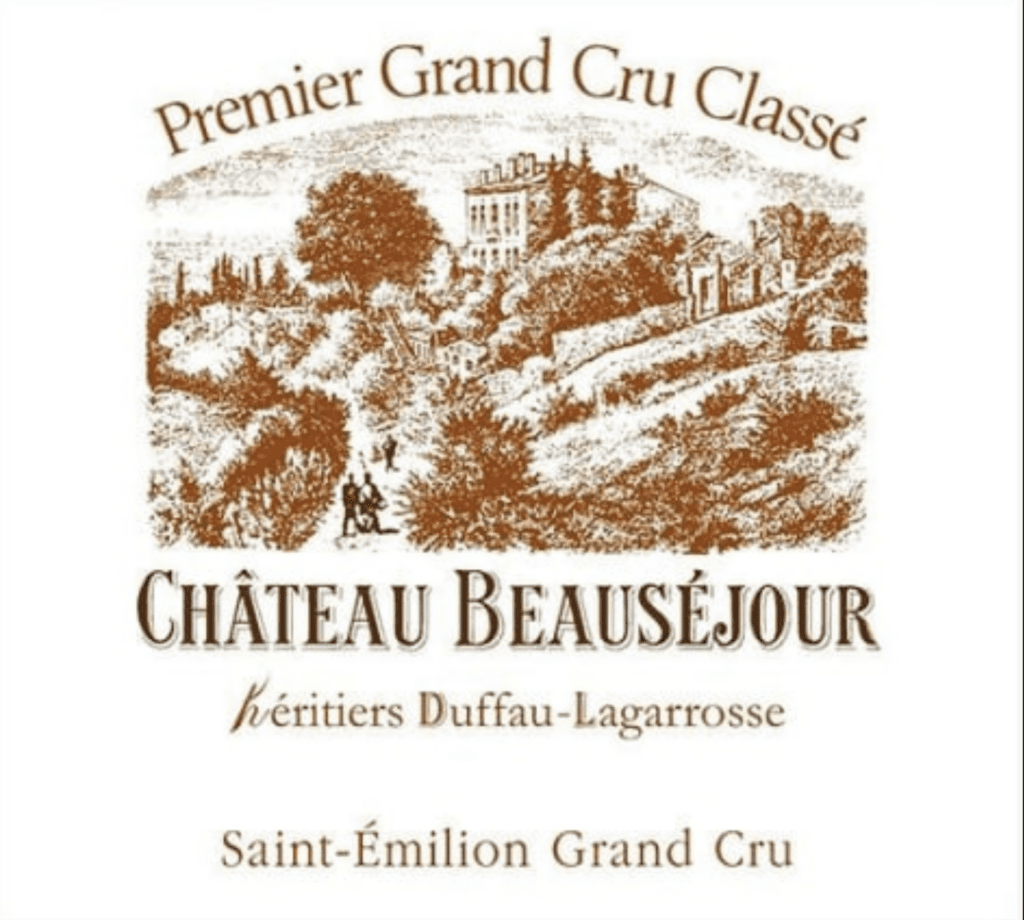
Beausejour Duffau Lagarosse 2019
96 Points
$130 a Bottle
This is a very cool and refined young Bordeaux with crushed-berry, walnut, mushroom, chocolate and salt character.
Some wet earth, too. It’s medium-to full-bodied with very integrated tannins that are polished and poised.
Energetic, long and precise at the finish. 81.5% merlot and 18.5% cabernet franc.
Deep garnet-purple in color, the 2020 Beausejour (Duffau Lagarrosse) wafts out of the glass with a glamorous perfume of red roses, kirsch, garrigue and black raspberries, giving way to a core of ripe blackberries and juicy black plums, plus earthy hints of truffles and tar.
The medium to full-bodied palate is densely laden with loads of very finely packed and fragrant red and black fruit layers, framed by multilayered grainy and satiny tannin textures and amazing freshness, finishing fantastically long and mineral laced.
Château Beauséjour Héritiers Duffau-Lagarrosse is a Saint-Emilion wine estate classified as a Premier Grand Cru Classé B in the Right Bank Bordeaux region. It makes red wine mostly from Merlot, typical of the style of Saint-Émilion and Right Bank Bordeaux producers.
The property had been a larger single estate until 1869 when it was divided between the two children of its original owner, Pierre-Paulin Ducarpe.
The château and half the vineyards were inherited by his daughter, who married into the Duffau-Lagarrosse family.
The other half of the property went to Ducarpe’s son and has become the modern estate Château Beau-Séjour Bécot.
Pierre-Paulin Ducarpe’s daughter took her husband’s name, which now appears in the estate’s full name: Château Beauséjour Héritiers Duffau-Lagarrosse (literally “Château Beauséjour Heirs of Duffau-Lagarrosse”).
It has since been passed down through nine generations and remains in the family.

Top Ranked French Bordeaux – Larcis Ducasse 2020
95 Points
$90 a Bottle
Larcis Ducasse hails from a magical terroir on the south-facing hillside just outside of Saint-Emilion.
There’s slightly more clay here, so Larcis-Ducasse always shows a ample density and power.
A blend of 86% Merlot and 14% Cabernet Franc from healthy yields of 34 hectoliters per hectare.
The estate favors whole berry fermentations in cement tanks, and the élevage occurs in 50% new French oak, with the balance in second- and third-fill oak.
Sporting a dense purple hue as well as powerful aromatics of darker currants, chocolate, tobacco, and damp earth, it hits the palate with medium to full-bodied richness, admirable concentration, ripe tannins, and a great finish.
Château Larcis-Ducasse is a Premier Grand Cru Classe B wine producer based in the Bordeaux appellation of Saint-Émilion.
The château and surrounding land are located on the Côte Pavie, where the site lies adjacent to the esteemed Château Pavie.
Like Pavie, Larcis-Ducasse produces a Merlot-dominant Bordeaux blend. It dates to the 16th Century, and it has been owned by the Gratiot Alphandéry family since the 1940s.
The estate spans around 11 hectares (27 acres), primarily planted to Merlot with a small amount of Cabernet Franc.
The low-yielding vines are on average 35 years old and are planted on a range of different soil types, from alluvial sand deposits to limestone, clay, and chalk.
A south-facing aspect maximizes sunshine exposure into the canopy allowing grapes to ripen to their full phenolic potential.

Top Ranked French Bordeaux – Lynch Bages 2020
95 Points
$125 a Bottle
The lowest amount of Cabernet Sauvignon in the blend on recent record but the signature of Lynch Bages is very much in play here – tons of liquorice, grippy and charismatic cassis and blueberry fruit with a velvety texture layered with blackcurrant pastilles and rich dark chocolate.
This is easily one of the best Pauillacs in the vintage, totally gorgeous.
The 2020 Lynch-Bages is a blend of 60% Cabernet Sauvignon, 31% Merlot, 4% Cabernet Franc and 5% Petit Verdot, aging for around 18 months in French oak barriques, 75% new.
It has an alcohol of 13.41%, a pH of 3.73 and an IPT (tannin index) of 93.
Opaque purple-black in color, it leaps from the glass with notes of crushed blackberries, cassis and boysenberries, plus touches of garrigue, red roses and cedar chest with hints of graphite and black olives.
The medium-bodied palate has a rock-solid frame of ripe, grainy tannins and plenty of freshness supporting the tight-knit black fruit and earthy flavors, finishing long and mineral laced.
Château Lynch-Bages is situated in the Pauillac commune of the Médoc region in Bordeaux.
The grand vin, which is made predominantly from Cabernet Sauvignon, is known for its structure and intensity, and can age for 20 years or more. It ranks among the best in the appellation.
The property in the village of Bages takes the other part of its name from Thomas Lynch, a Bordeaux merchant of Irish lineage who owned the property from 1749 to 1824.
It was rated a fifth growth in the Bordeaux Classification of 1855, although the reputation of the property, now in the hands of the Cazes family, soared from 1945 after a string of excellent vintages.
The vineyards are situated on a plateau west of Pauillac town on gravel, chalk and sand soils.
There are 90 hectares (220 acres) of vineyards, 75 percent of which are planted with Cabernet Sauvignon.
The rest is planted to Merlot, Cabernet Franc and a small amount of Petit Verdot.

Top Ranked French Bordeaux – Chateau Margaux 2020
97 Points
$650 a Bottle
Deep garnet-purple colored, the Château Margaux (blended of 94% Cabernet Sauvignon, 3% Cabernet Franc, 2% Merlot and 1% Petit Verdot).
Gglamorous red currants, candied violets, kirsch and crushed blackcurrants scents followed by notions of tilled black soil, forest floor, cast iron pan and cigar box with subtle wafts of lavender and oolong tea.
Medium-bodied, mineral laced accents hover over the palate with an ethereal sensation of weightlessness, yet it is super intense with layers of red and black flavors.
Supported by a firm texture of silt-fine tannins, finishing wonderfully fragrant and incredibly long.
Château Margaux is one of Bordeaux’s most famous wine estates, located just east of Margaux itself in the Médoc.
Along with Lafite, Latour and Haut-Brion, it was rated as a first growth in the original 1855 Bordeaux Classification of the Médoc.
Generally, Margaux is considered as the most elegant of the first growths, and is consistently one of the most expensive wines in the world.
The Cabernet Sauvignon-dominant blend is complimented with small portions of Merlot, Petit Verdot and Cabernet Franc.
Château Margaux’s vineyards have a complex combination of soils that are unique to the area.
These consist of chalky clay under a top layer of coarse and fine gravels, which is well-suited to Cabernet Sauvignon, which accounts for around 75 percent of plantings.
Merlot makes up a further 20 percent, with the rest planted to Cabernet Franc and Petit Verdot.
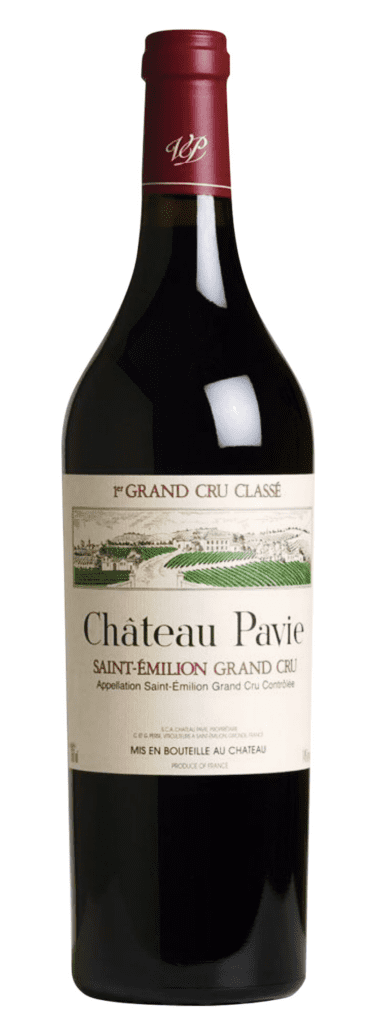
Top Ranked French Bordeaux – Chateau Pavie 2020
97 Points
$310 a Bottle
Pavie remains one of the most powerful, extracted wines in all of Bordeaux, exhibiting a glass-staining, opaque purple-black color and a rich bouquet of cherries, blackberries and berry fruit liqueur mingled with sweet spices, loamy soil, licorice and rose petals.
Full-bodied, powerful and muscular, it’s thick and textural, with a layered, multidimensional mid-palate laden with ripe fruit and rich, chewy tannins, concluding with a long, youthfully grippy finish.
Based on 50% Merlot, 32% Cabernet Franc, and 18% Cabernet Sauvignon that was brought up in 80% new French oak, this deep purple-hued effort has a great bouquet of ripe black cherries, darker currants, tobacco leaf, violets, and graphite, with a beautiful sense of minerality and salinity on the palate.
Full-bodied, concentrated, and powerful, it has plenty of background oak, a deep, layered mid-palate, terrific tannins, and a great finish. It shows the more understated, elegant style of the vintage yet is still pure Pavie.
Château Pavie is a critically acclaimed – if sometimes controversial – wine estate in the Saint-Émilion appellation of northeastern Bordeaux, on the right bank of the Dordogne river. Originally named a Premier Grand Cru Classé (B) in the 1955 classification of Saint-Émilion wines, it was promoted to Premier Grand Cru Classé (A) status in the 2012 iteration.
It is known for its Merlot-dominant grand vin.
The 37-hectare (91-acre) Pavie estate lies just east of Saint-Émilion town, sitting on the southern edge of the Saint-Émilion plateau.
The estate vineyards have a coveted position, enjoying both the limestone bedrock of the plateau and the south-facing slope that both drains excess water and gets excellent exposure to the sun.
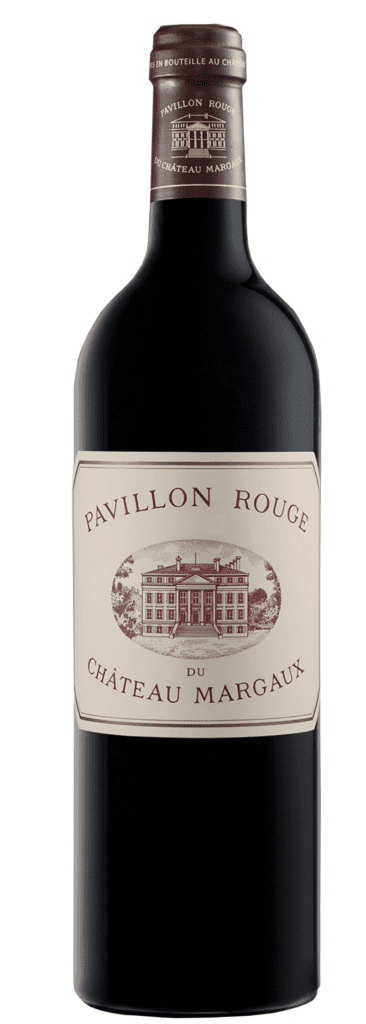
Pavillon Rouge du Chateau Margaux 2020
93 Points
$190 a Bottle
Pavillon Rouge represents 31% of the harvest.
Even though their selection criteria was as strict as for previous vintages, the percentage of Pavillon Rouge is slightly higher this year thanks to the consistency of quality conducive to great vintages.
Besides this year’s climatic conditions, they hope that this increased quality is also the fruit of their efforts in the parcels whose quality approaches that of the Grand Vin.
The 2020 Pavillon Rouge is composed of 75% Cabernet Sauvignon, 18% Merlot, 2% Cabernet Franc and 5% Petit Verdot. The alcohol weighs in at 13.6%.
Deep purple-black in color, the nose slowly unfurls to reveal gorgeous floral notes of lilacs and red roses, leading to a core of blackcurrant cordial, Morello cherries and minted blackberries, plus wafts of crushed rocks, forest floor and tilled loam.
The medium to full-bodied palate is a mouthful of pure vinous seduction, slowly releasing layers of perfumed black fruits and mineral accents within a frame of achingly plush tannins and seamless freshness, finishing with epic length and a whole array of fragrant earth sparks.
Château Margaux is one of Bordeaux’s most famous wine estates, located just east of Margaux itself in the Médoc.
Along with Lafite, Latour and Haut-Brion, it was rated as a first growth in the original 1855 Bordeaux Classification of the Médoc.
Generally, Margaux is considered as the most elegant of the first growths, and is consistently one of the most expensive wines in the world.
The Cabernet Sauvignon-dominant blend is complimented with small portions of Merlot, Petit Verdot and Cabernet Franc.
Château Margaux’s vineyards have a complex combination of soils that are unique to the area.
These consist of chalky clay under a top layer of coarse and fine gravels, which is well-suited to Cabernet Sauvignon, which accounts for around 75 percent of plantings.
Merlot makes up a further 20 percent, with the rest planted to Cabernet Franc and Petit Verdot.
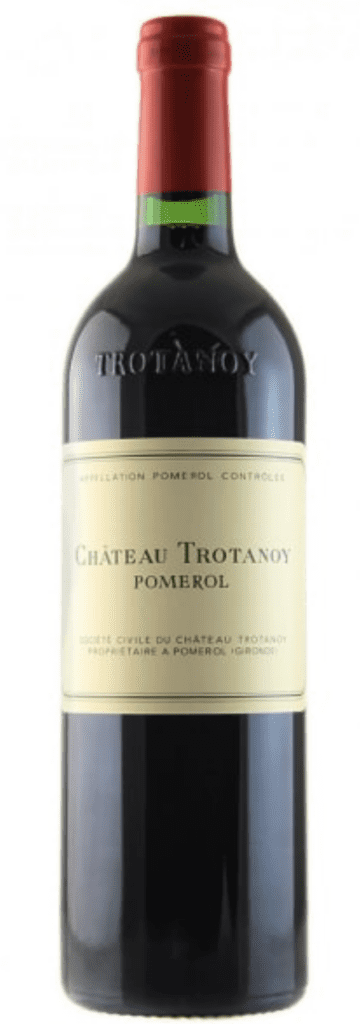
Top Ranked French Bordeaux – Chateau Trotanoy Pomerol 2019
97 Points
$350 a Bottle
The 2019 Trotanoy is composed of 90% Merlot and 10% Cabernet Franc.
Medium to deep garnet-purple in color, it slowly unfurls to reveal a jaw-dropping perfume of Black Forest cake, black raspberries, blackberry pie and kirsch, followed by hints of cast-iron pan, violets, woodsmoke, Chinese five spice and eucalyptus, with a waft of tree bark.
The full-bodied palate explodes with exotic spice and mineral fireworks, grounded by a concentrated, black and red berry preserves core and framed by firm, grainy tannins, finishing with epic length and depth.
It will need a good five years in bottle to tame some of the youthfully overt, showy fruit and allow the mineral and earth nuances to emerge, then it should easily cellar another 35 years or more.
Château Trotanoy is a Bordeaux wine estate in the Pomerol appellation, regarded as one of the great wines of the right bank.
The Merlot-dominant wine is known for its decadent, rich style, and its prices are among the highest in Bordeaux.
In the 18th Century, the estate was known as Trop Ennuie, or “Too Annoying”, due to the poor, hard-to-work nature of the soils here.
These are made up of clay with deposits of gravel and iron, and are now considered as very good soils for viticulture. Château Trotanoy is located on the western side of the Pomerol plateau, not far from Pétrus and Lafleur, and covers 7 hectares (18 acres).
Around 90 percent of this is planted to Merlot, with Cabernet Franc accounting for the remainder.
Trotanoy was one of the few estates that was not destroyed in the frosts of 1956, and therefore has some of the oldest vines in the region.
Incredible Travel Destinations >>

